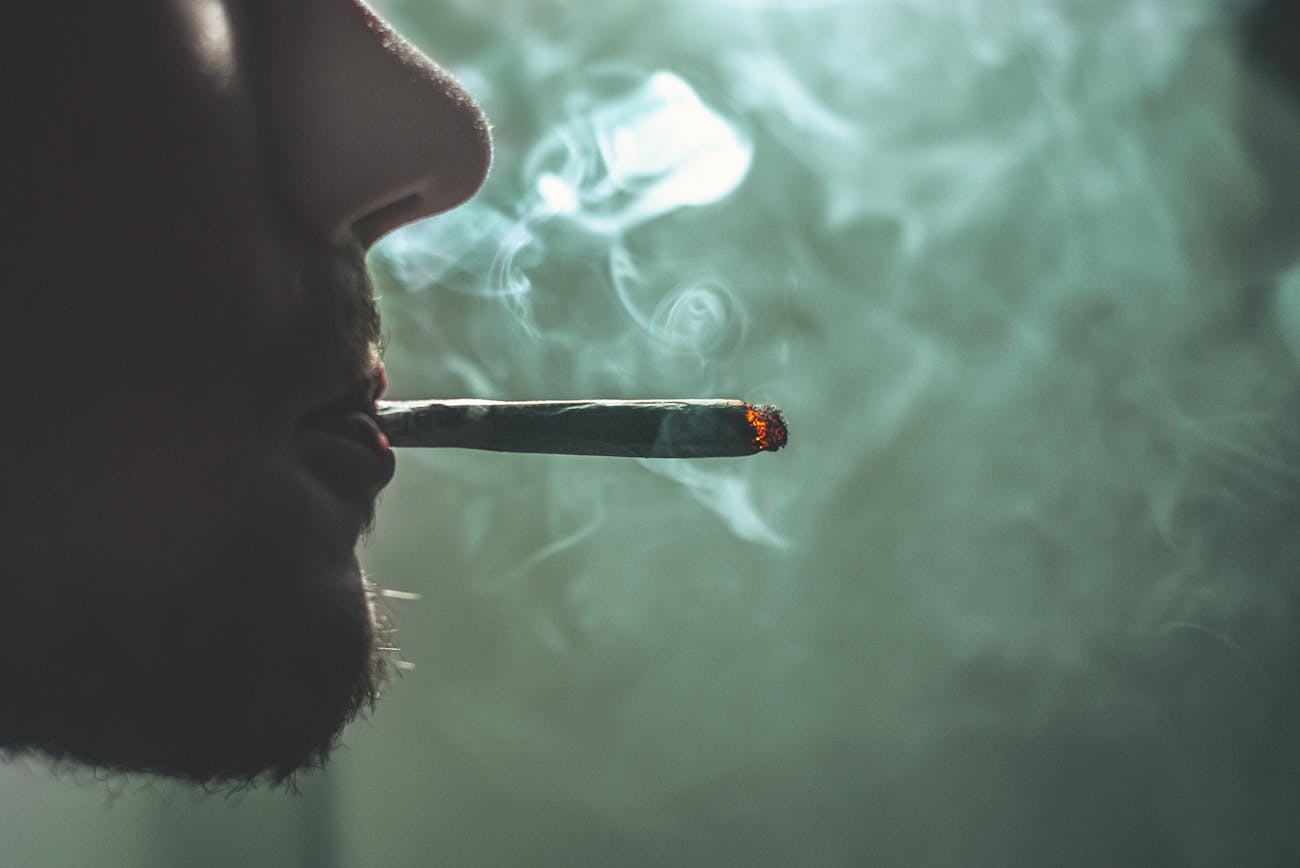Marijuana affects sperm because of deep biological ties.

In a study released Thursday in Scientific Reports
a team from Denmark reveal that, for better or worse, the body’s sperm
making machinery knows how to recognize cannabinoids, the active
chemicals in marijuana.
It turns out that there are far more signs of the endocannabinoid system
in testicles and sperm cells than previously thought. Endocannabinoids
are a network of neurotransmitters that are naturally manufactured by
the body, but they bear a similarity to cannabinoids, the chemicals that occur naturally in cannabis, which are sometimes called exogenous cannabinoids by scientists. Both the endocannabinoids we make ourselves (called endogenous cannabinoids) and exogenous cannabinoids bind to cannabinoid receptors throughout the body.
In
this study, after analyzing testicular tissue samples of the 15 men,
the researchers found there are plenty of endocannabinoid receptors and
endocannabinoids in the testicles and sperm cells too.
That’s important because it tells us that humans
sperm-production hardware is attuned to interacting with cannabinoid
chemicals. So when we add exogenous cannabinoids into the mix, after say a person smokes a bowl, it could have effects on how that sperm-production machinery operates.
Those effects may have been overlooked before, says lead study author Niels Skakkebæk, Ph.D., an affiliate professor at the University of Copenhagen.
“Andrologists
like me have for generations been focusing on other hormone aspects,
but overlooked the possibility that endocannabinoids may participate in
the normal sperm and hormone production,” he explained in a press
release sent to Inverse. “I was surprised to find that
endocannabinoids were so widely expressed in all cell types in the
testis, both in the germ cells and the hormone-producing cells.”
Skakkebæk’s study
was conducted on a small sample of 15 men with testicular germ cell
cancer, who agreed to have tissue samples of their testis analyzed by
scientists. When they analyzed those samples, they found that testicular
tissue and germ cells, which eventually become sperm, had three key
ingredients of the endocannabinoid system: the actual endocannabinoid
chemicals themselves, the receptors that they bind to, and enzymes that
break those chemicals down.
In the tissue samples,
they detected an endocannabinoid called 2-arachidonoylglycerol (2-AG),
which is one of the primary parts of the endocannabinoid system. They
also found genetic transcripts that code for the endocannabinoid
receptors in germ cells, and evidence that enzymes that break down
endocannabinoids were “abundantly present” in germ cells.
That
shows that the body’s sperm manufacturing plant has “machinery to
synthesize and metabolize endocannabinoids.” That suggests that this
machinery may also be attuned to the extra cannabinoids that fill our
bodies after smoking weed — though it’s unclear exactly what happens
when we overload that system.
Skakkebæk notes that his entire study was inspired by work showing that marijuana could have negative impacts on sperm development in men who smoked at least once per week.
“We did see a hint a couple of years ago, when we found that young
Danish men, who had used marijuana, had significantly poorer sperm
counts than their peers,” he added.
But there other studies that suggest that the relationship between marijuana and sperm quality is more nuanced. A paper released February in Human Reproduction examined 662 men who reported their marijuana use. Within that sample, 365 men who had smoked weed before had significantly higher sperm counts than the 297 who hadn’t.
That
alone differentiates it from the 2015 study on Danish men that
Skakkebaek refers to, but there was another key difference. To be
counted as a marijuana user in this study the men only had to report
smoking weed at least more than two joints (or the equivalent) in their
entire lives.

Compared
to the men in the Danish who smoked once per week that’s far less
cannabinoid exposure — which could partially explain these results.
The lead author of that study, Feiby Nassan,
Ph.D. a research fellow at Harvard’s T.H. Chan School of Public Health,
offered two explanations for these results. One was that we shouldn’t
be too hasty to draw conclusions from them (there could have been other
factors influencing sperm count beyond smoking weed), but the other was
that the amount of marijuana smoked has a big influence on sperm itself:
“Low
levels of marijuana use could benefit sperm production because of its
effect on the endocannabinoid system, which is known to play a role in
fertility, but those benefits are lost with higher levels of marijuana
consumption,” she explained.

Combined with Skakkebæk’s study, these new results point
to just how tightly the endocannabinoid system and sperm production are
tied. They’re literally built into one another on a biological level.
In the future, we may finally be able to nail down exactly how smoking
impacts that special relationship.
Abstract:
>Heavy use of cannabis
(marijuana) has been associated with decreased semen quality, which may
reflect disruption of the endocannabinoid system (ECS) in the male
reproductive tract by exogenous cannabinoids. Components of ECS have
been previously described in human spermatozoa and in the rodent testis
but there is little information on the ECS expression within the human
testis. In this study we characterized the main components of the ECS by
immunohistochemistry (IHC) on archived testis tissue samples from 15
patients, and by in silico analysis of existing transcriptome datasets
from testicular cell populations. The presence of 2-arachidonoylglycerol
(2-AG) in the human testis was confirmed by matrix-assisted laser
desorption ionization imaging analysis. Endocannabinoidsynthesising
enzymes; diacylglycerol lipase (DAGL) and
N-acyl-phosphatidylethanolamine-specifc phospholipase D (NAPE-PLD), were
detected in germ cells and somatic cells, respectively. The cannabinoid
receptors, CNR1 and CNR2 were detected at a low level in post-meiotic
germ cells and Leydig- and peritubular cells. Different transcripts
encoding distinct receptor isoforms (CB1, CB1A, CB1B and CB2A) were also
differentially distributed, mainly in germ cells. The
cannabinoid-metabolising enzymes were abundantly present; the
α/β-hydrolase domain-containing protein 2 (ABHD2) in all germ cell
types, except early spermatocytes, the monoacylglycerol lipase (MGLL) in
Sertoli cells, and the fatty acid amide hydrolase (FAAH) in late
spermatocytes and post-meiotic germ cells. Our findings are consistent
with a direct involvement of the ECS in regulation of human testicular
physiology, including spermatogenesis and Leydig cell function. The
study provides new evidence supporting observations that recreational
cannabis can have possible deleterious effects on human testicular
function.

No comments:
Post a Comment